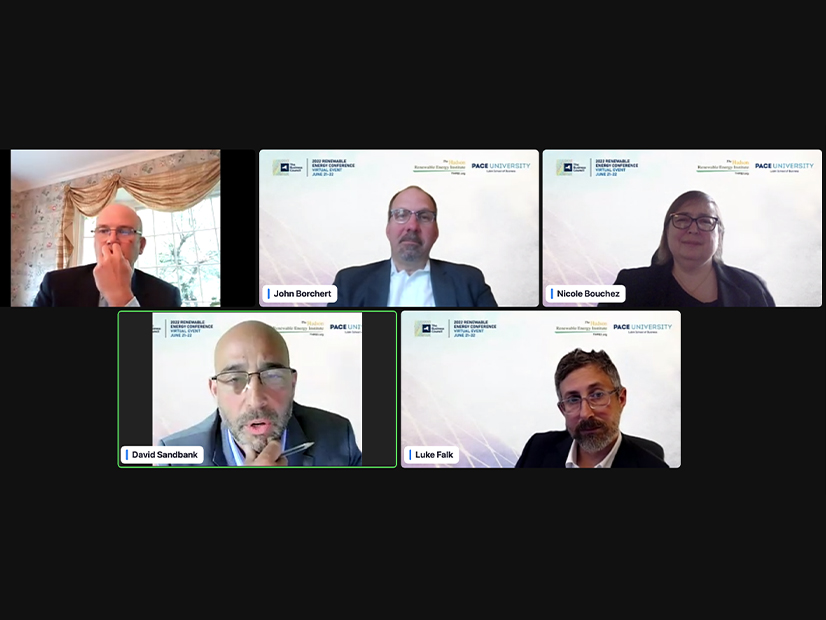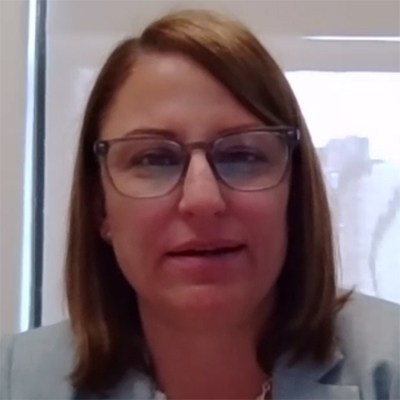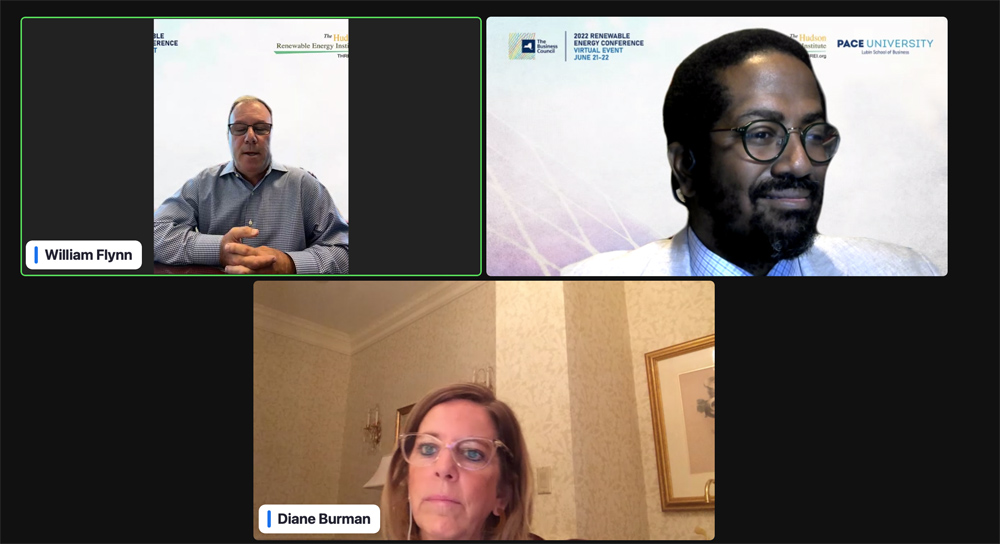
The Business Council of New York State, The Hudson Renewable Energy Institute and Pace University on June 21-22 hosted the 8th Annual 2022 Renewable Energy Conference, which explored the challenges of managing a fundamental change in society’s energy supply and infrastructure under New York’s climate law.
The following are comments heard at the conference that featured state officials and regulators, business leaders, utility representatives and other stakeholders.
Society does not change according to a stipulated schedule, but it is an evolutionary process, Hudson Institute Chair Allan Page said.
“Leadership in the state needs to take into account the voluntary beneficial behavior of citizens of New York to get to net carbon zero on a societal glide path free of deleterious unintended consequences,” Page said. “Competitive markets come back to balance or equilibrium that allows choice between competing needs. Regarding the [New York Climate Action Council’s] draft scoping plan, a little more balance is needed.”
Implementing CLCPA
The Climate Leadership and Community Protection Act (CLCPA) requires New York to obtain 70% of its electricity from renewable sources by 2030 and to make the grid net-zero emissions by 2040.
The council in December unanimously approved a draft scoping plan that lays out the steps needed to achieve the emission limits set by the CLCPA.
 NYSERDA CEO Doreen Harris | BCNYS
NYSERDA CEO Doreen Harris | BCNYSThat plan provides several scenarios for meeting the state’s environmental directives and incorporates recommendations from the council’s seven sector-specific advisory panels, including from one on energy-intensive and trade-exposed industries, said Doreen Harris, president and CEO of the New York State Energy Research and Development Authority (NYSERDA) and council co-chair.
“When we look at the draft scoping plan in the broadest sense, it does show that the cost of inaction exceeds the cost of action by more than $90 billion, and ultimately the improvements in air quality, transportation and energy in low-income homes will generate health benefits ranging from approximately $165 billion to $170 billion,” Harris said.
In addition to hundreds of miles of transmission projects under construction, the Public Service Commission and NYISO have taken up utility investment plans needed to integrate renewables across the state, and the public policy transmission project, for example, advancing to provide better transfer capability from Long Island to New York City to allow the integration of more offshore wind energy into the city’s grid, she said.
“When we look at it in the longer term, that’s when the investments, that will be needed to realize that very reliable 2050 grid, are really topics that are to be determined through the work of NYISO, the Department of Public Service with NYSERDA, and of course with the federal investments that we are very excited to benefit from as they move forward,” Harris said.
Power Sector and DERs
Investing in and building new transmission in New York will be key to achieving the state’s public policy objectives, yet it is extraordinarily challenging, particularly on Long Island, where adding new infrastructure has always been difficult, said Scott Medla, managing partner at investment bank Ansonia Partners, who moderated a panel on distributed energy resources (DER).
“In my view, the bottom line is to find ways to use existing rights of way to build, not higher, not wider, not longer, be it underground or underwater, but to the extent possible to use leading technologies that are proven,” Medla said.
NYISO’s focus is on operating the grid to provide reliable service to customers, which requires having sufficient resources that can satisfy the CLCPA, while controlling their output, running for extended periods at specific output levels and being flexible, Nicole Bouchez, NYISO Principal Economist, said.
“The real puzzle now is that we don’t know what technology is going to step in and provide that service,” Bouchez said.
Maintaining affordability in the energy supply must be a part of the clean energy transition, said John Borchert, senior director of energy policy for Central Hudson Gas and Electric.
“One of the big steps that needs to be further explored is reducing emissions and energy use in the lowest cost way,” Borchert said. “Energy efficiency has always been the lowest-cost, most effective way to reduce emissions and save money,”
New York, he added, should continue to support and evaluate further expansion of energy efficiency.
NYISO has been a leader in facilitating the complex integration of renewable resources onto the grid, said Luke Falk, senior vice president for development at EnergyRe, partner with Invenergy in developing the 1,300-MW Clean Path New York transmission project to bring upstate wind and solar energy into the city.
“We’re talking about 20-something, large-scale wind and solar development projects, all of which are advanced in parallel and in their own right, and a large, underground HVDC transmission line,” Falk said.
Developing those projects will be a complex process that requires precise orchestration, according to Falk, who says it’s reasonable to forecast a trend toward HVDC.
Regulatory Challenges
William Flynn, partner at law firm Harris Beach, moderated a discussion with two PSC commissioners to explore significant opportunities and challenges facing the state’s energy sector and business community regarding the energy sector transformation.
Environmental considerations have not always been a priority for the commission, particularly the impact of those pollutants on individuals, PSC Chair Rory Christian said.
“One of the first places I worked was at the Ravenswood power station Astoria Queens, and I was always surprised at how close it was to a very dense urban population center and significant [public] housing within walking distance,” Christian said.
Planners made decisions 50 or 60 years ago to site power plants in places that have had a deleterious effect on residents, according to Christian. Reducing those emissions allows the state to address those impacts and improve the health of affected communities.
“That’s probably one of the biggest priorities of the commission,” he said.
As the state leans into electrification, demand may far outpace reliable supply in meeting the growing electricity needs of New York, Commissioner Diane Burman said.

The commission needs “to understand that we have a fiduciary responsibility to our ratepayers, and we need to look at it through the lens of us as economic regulators, which means that costs do matter, they impact on everyone, and to that end how do we do this in a way that achieves greenhouse gas reduction goals without going backwards,” Burman said.
As an example, Christian said New York has spent many decades building up the gas network and that it’s important to ensure continued use of it in the most efficient way possible toward meeting climate goals.
“In addition to that, we’ve also released the CLCPA order which in many ways is going to track all the various components and actions, specifically actions, that are taken by this commission towards meeting goals of the CLCPA, and that would be in addition to tracking the costs of those items moving towards meeting the goals,” Christian said.
While the state is on a good track, realistically it needs to address the challenge of transitioning away from natural gas without compromising reliability, Burman said.
“We need to look at how curtailing the use of natural gas can actually conflict with our state goals to reduce carbon emissions if the unavailability of gas leads to greater near-term reliance on other fossil fuels such as oil,” Burman said.


